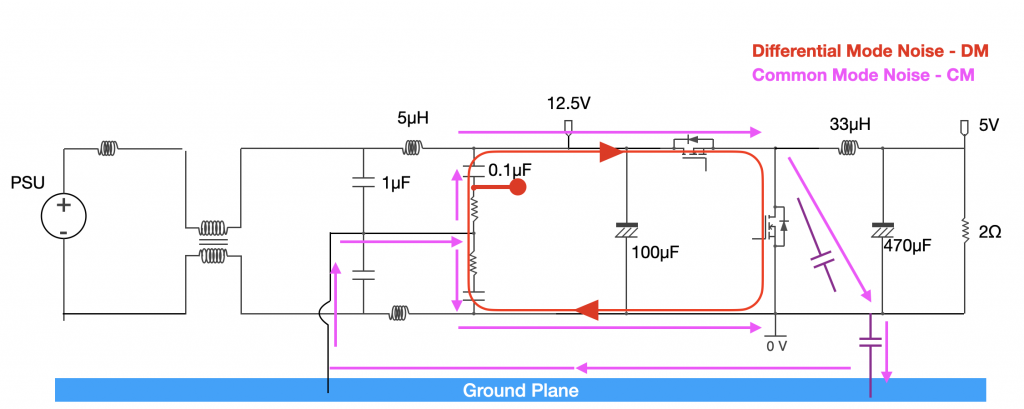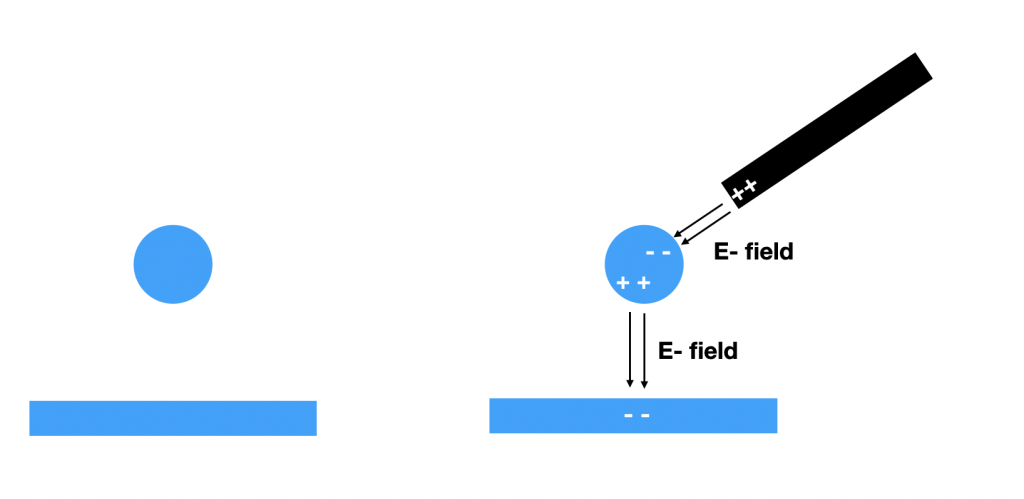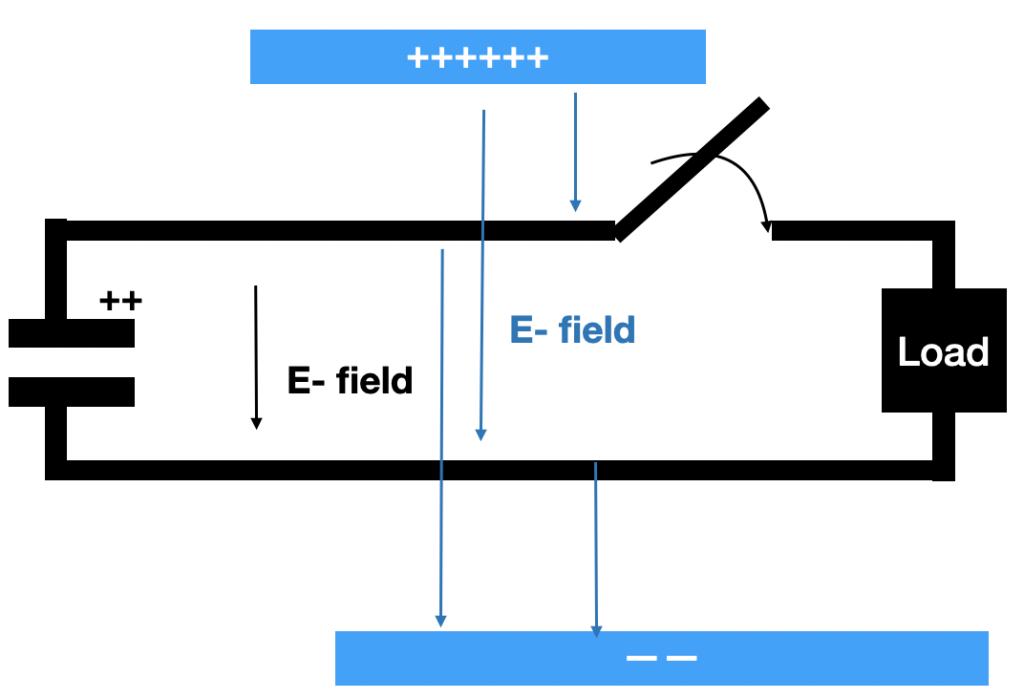by Min Zhang, the EMC consultant
The term of common mode noise is always mentioned in the EMC world. We say radiated noise is due to the common mode noise travelling on the cable, or common mode noise on the high impedance path cause ground bounce issue. But what is common mode noise? People think they understand it, they say differential mode noise is you have one current goes in one direction, the other goes the other direction. Common mode noise is that you have current travelling in both lines the same direction, the return path is therefore referred to another ‘common’ point. This common point could be a ground plane, a cable nearby, or could be a metal structure meters apart.
A common mode current path (shown as purple) is demonstrated in Figure 1, the differential mode current is shown in red. The circuit for demonstration purposes is a step down DC-DC converter.

But let us ask a more fundamental question, where does common mode current come from in the first place? Let’s say you have a switch between Vin and Gnd, when you flip the switch, why it is not 100% differential mode, but rather you have some common mode content?
You might say, because there’s a parasitic capacitance there, and when you have voltage change, there will be displacement current induced, and that is common mode current. True as it is, this circuit based view often cannot explain things well.
In order to understand the common mode current well, we need to put on our field glasses and start viewing it from the field point. We all learnt in high school physics that when approaching a conductor with a charged object, the neutrally charged conductor will have electrons moving towards to the positively charged object side and leaving the positive charge on the other side of the conductor. This again, will induce another E-field to another conductor underneath it. This is what we call induction. The truth is, electrical activity on one conductor will always induce charge redistribution on the other one, the field between the conductors is the only reason why coupling is happening.

Another important thing to remember is that energy is stored in the field, not inside the conductor. So in this case, the black conductor, the blue metal sphere, the blue ground underneath, none of which stores energy. Energy is only stored in the space around them, i.e. energy is stored in the form of field.
If you understand the points that we just made, then let’s have a look what is happening when a switch is flipped. Suppose you have an energy source, which in the case of DC-DC converter, is often a capacitor. When you flip the switch, you expect the energy is delivered 100% from the capacitor to your load. But what normally happens is, that energy stored in the capacitor will not be delivered to the load immediately. Because energy travels at the speed of light (3×10^8m/s), it will take time for the energy to be delivered from the source to the load. In the meantime, some of the energy from the neighbourhood will actually be delivered before the main energy arrives. Why? Simply because in the space between the load and the nearby conductors, there’s energy. This energy, though not much, can be delivered immediately (because they are closer). And it is this phenomenon, when the load requests energy, and get the energy from nearby circuit/conductors rather than the dedicated energy source, causes what we call common mode noise.

It is important to understand this, for instance, once this concept is well understood, you will understand, often, when we reduce the impedance of the differential path significantly, the common mode noise is also brought down. This is because, if the impedance path of the differential mode is reduced, energy from the main energy source is delivered much quicker, therefore, less energy from the neighbouring circuits is delivered to the load.